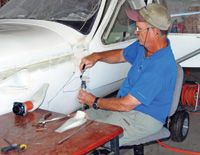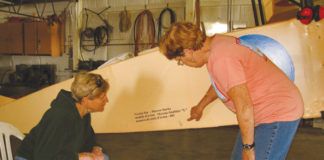Perils of PIO
I must take exception to the statement, “The BD-5 suffered from a PIO problem, potentially worsened by sensitive controls” in the March 2012 Wind Tunnel article “Failure to launch.” This is one of the myths and misconceptions about the BD-5 and is simply not true.
Dave Martin, past editor of KITPLANES® magazine, said in the article “The BD-5 Lives” in January 1986, “Most of us who flew the BD-5 (this writer included) recognized the technical achievement of the airplane. The BD-5 was fast and highly maneuverable, surprisingly stable: light and extremely responsive without being overly sensitive. That is a difficult balance to achieve. I liked the handling a lot.” Has Barnaby Wainfan ever flown a BD-5?
There have been past instances of PIO in the BD-5, but none attributed to a design feature. Like any aircraft design, as Ron Wanttaja points out in his articles about aircraft safety, if it is not properly built or flown by a qualified pilot, then the potential for a crash increases. In our years of experience with the BD-5 some potential problems that could lead to PIO are: CG not properly done (the first fatality was due to a faulty CG), pitch controls not rigged properly, horizontal stabilator not properly balanced, non-jig drilled wing with a poorly shaped leading edge (this can drastically alter the airflow characteristics of a laminar airfoil wing and result in unpredictable stall characteristics), overweight, improper takeoff trim setting, etc.
The other major factor is the pilot. If the pilot is not properly briefed on the handling characteristics, especially those of a single-seat aircraft, then it is not surprising that a PIO can be set up, especially when he retracts the landing gear for the first time. Again, not a design fault, but rather the pilot not being aware that when he pulls the landing-gear handle toward him, the natural tendency is to counter the force of the left hand by bracing and pushing forward with the right hand on the control stick.
This will set up a PIO. We instruct any new BD-5 pilot about how to prevent this potential situation during our preflight briefings. The videos of our new FLS Microjet at www.bd-micro.com and www.flsmicrojet.com show not a hint of PIO tendencies during takeoff.
Skeeter Karnes
BD-Micro Technologies, Inc.
Good Enough?
This article [April 2012, Free Flight] reminded me very much of the late Colin Chapman, who started and ran Lotus cars and the racing team that was so successful and innovative in Formula 1 racing. His design precept was always, “Simplify and add lightness.” And he was known to comment that the perfect race car design would fall apart 10 feet past the finish line of the race.
Anything else was over design and, most likely, heavier than it needed to be, and he knew that weight was the enemy of performance. His designs were sometimes fragile, but they were always fast!
And then there was the Lotus mechanic I knew who made the comment that, “If you can’t bend it with pump pliers, it is not a genuine Lotus part. It is too heavy!”
Steve Dorr
Write to [email protected] or mail a piece of your mind to:
KITPLANES, P.O. Box 315, Ashland, OR 97520.




